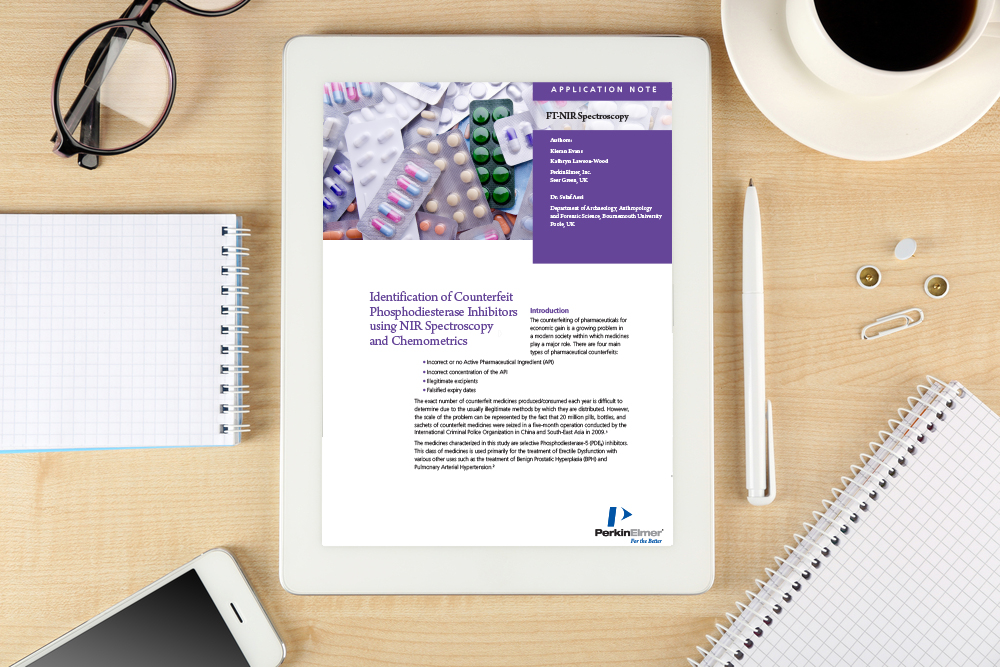Application Note: Identification of counterfeit phosphodiesterase inhibitors using NIR spectroscopy and chemometrics
Posted: 15 March 2018 | PerkinElmer | No comments yet
The counterfeiting of pharmaceuticals for economic gain is a growing problem in a modern society within which medicines play a major role…
There are four main types of pharmaceutical counterfeits:
- Incorrect or no Active Pharmaceutical Ingredient (API)
- Incorrect concentration of the API
- Illegitimate excipients
- Falsified expiry dates
The exact number of counterfeit medicines produced/consumed each year is difficult to determine due to the usually illegitimate methods by which they are distributed. However, the scale of the problem can be represented by the fact that 20 million pills, bottles, and sachets of counterfeit medicines were seized in a five-month operation conducted by the International Criminal Police Organisation in China and South-East Asia in 2009.
The medicines characterised in this study are selective Phosphodiesterase-5 (PDE5) inhibitors. This class of medicines is used primarily for the treatment of Erectile Dysfunction with various other uses such as the treatment of Benign Prostatic Hyperplasia (BPH) and Pulmonary Arterial Hypertension.
The rest of this application note is restricted - login or subscribe free to access


Why subscribe? Join our growing community of thousands of industry professionals and gain access to:
- bi-monthly issues in print and/or digital format
- case studies, whitepapers, webinars and industry-leading content
- breaking news and features
- our extensive online archive of thousands of articles and years of past issues
- ...And it's all free!
Click here to Subscribe today Login here










